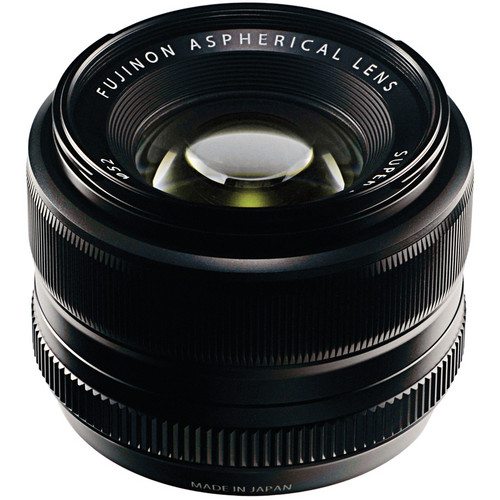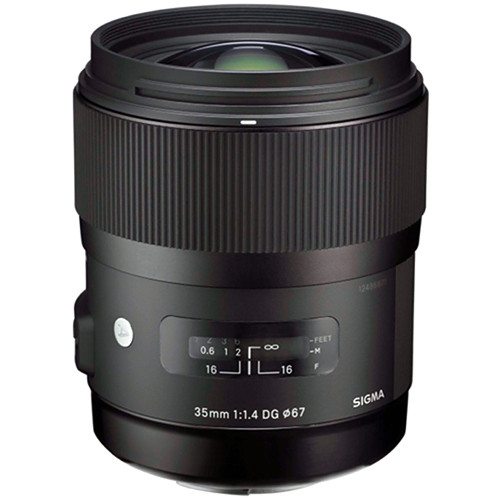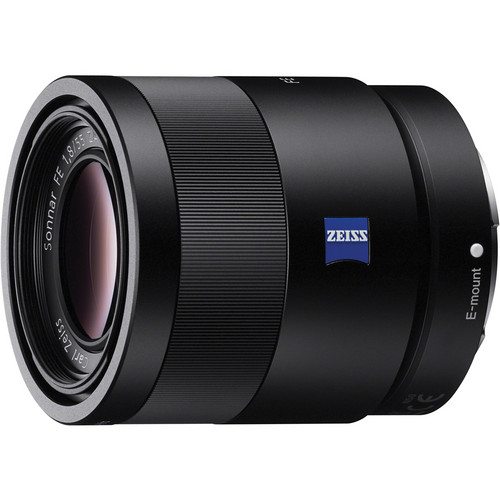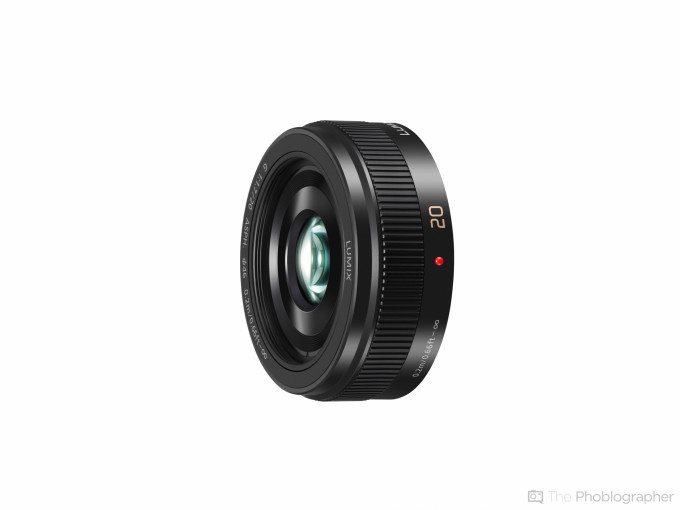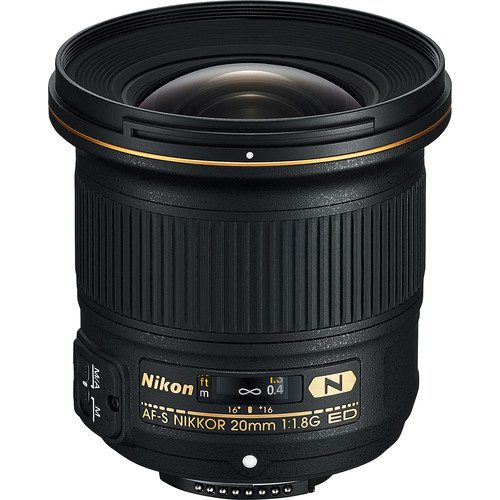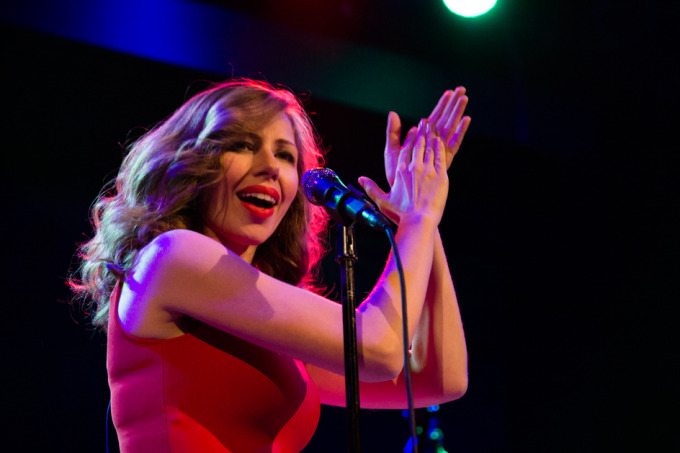
Many concert photographers will tell you to use primes if you can. The concept just makes so much sense–they have a fast aperture that will help you out in very low lit situations, they take up less room in a crowded music pit, and you can eventually learn to think and see the world in that single focal length. To that end, it makes the picture taking process much more instinctual.
We’ve tested lots of lenses over time, and have found a handful from pretty much every camera system that work out solidly. But we’d be fools to say that it’s all about the gear here. In the end, it’s your ability to get the shot and predict movement that will award you better photos.
Fujifilm 35mm f1.4
What We Say: When this lens first came out, it was applauded for the image quality, but bashed for its terrible autofocus performance. However, it can be argued that the Fujifilm 35mm f1.4 received more firmware updates than any other lens–and it is now a very welcome addition to the camera bag of every Fujifilm shooter.
So what we do we think?
“Paired with this lens, it looks just like the images came out being used with Zeiss glass. I say that because their rangefinder glass doesn’t have as much microcontrast as their DSLR glass, but it is still noticeable. And the Fujifilm 35mm f1.4 does have some microcontrast indeed to make subjects pop.”
Check out our review.
Use it For: Focusing on a subject fairly tightly while still giving them a bit of room to play around in the scene and therefore for you to track them effectively. Try focusing primarily in one of the areas where the rule of third grids connect.
Buy Now: Amazon
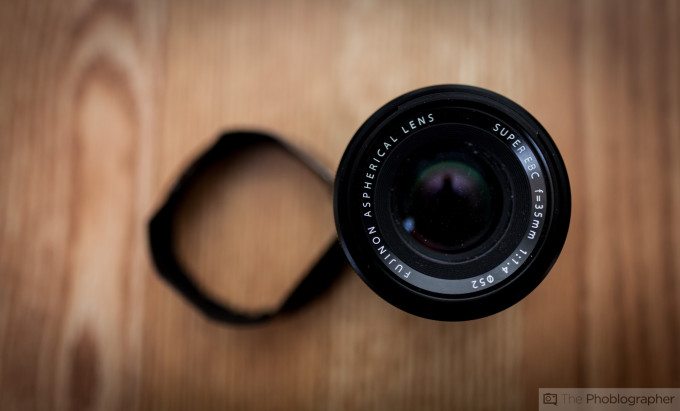
Sigma 35mm f1.4
“If you see the photo in your viewfinder, you’ve already missed it. You have to anticipate every move, because when you see that shot it’s already passed.” – Quote from our interview with photographer Nicole Fara Silver on concert shooting.
What We Say: On a full frame DSLR, the Sigma 35mm f1.4 will mimic the way that you naturally see the world. This lens is all about positioning because of this, but the 35mm field of view lends itself to lots of creative opportunities when it comes to shooting concerts.
“For quite a while, I loved my Canon 35mm f1.4 L USM. But after some time, I started to believe that the company needed to update it with sharper optics. In my opinion though, they’re taking a bit too long and when I used the new 24-70mm f2.8, I was very disappointed. With that said, Sigma offers users not only a better and more affordable option, but one that you’ll end up proudly carrying around with you all the time.”
– Quote from our review.
Use it For: Bands sometimes interact directly with fans, the 35mm field of view is wide enough to capture this and the entire scene very well.
Buy Now: Amazon
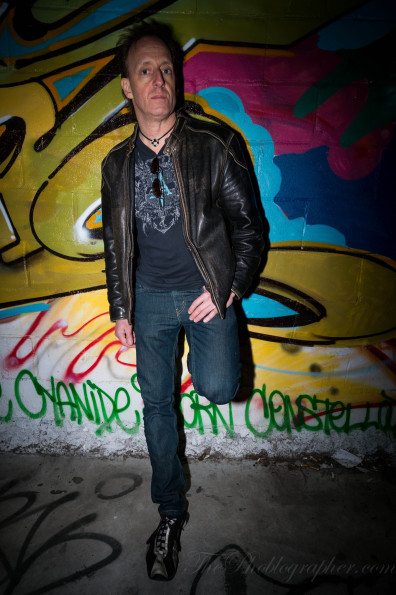
Sony 55mm f1.8
What We Say: The Sony 55mm f1.8 is for the photographer that is a bit further away from center stage. You’ll have a bit more reach since this lens is a 55mm offering rather than just 50mm. It’s sharp, has beautiful bokeh, is built well, and may not even need to be stopped down.
“In a word, the bokeh is velvety. Wide open, this lens will give you desirable results, and that only gets better as you stop down. For the bokeh connoisseurs out there, this is the lens to get. The 35mm f2.8 will give you nice results, too, but that lens doesn’t have the benefit of the 55’s attributes, namely: focal length and aperture. Your subject will be in focus, and will be framed by seamless bokeh.”
– Quote from our review.
Use it For: If you’re not close to the stage or want to start focusing on other members of the band. This lens is also great for getting detail shots.
Buy Now: Amazon
Panasonic 20mm f1.7 II
What We Say: This lens isn’t as sharp as its predecessor, but that doesn’t matter much. It’s built better, focuses faster and on a Micro Four Thirds sensor you’ll get a lot more of a scene in focus at f1.7. In fact, this could make this lens and Micro Four Thirds our favorite choice for shooting concerts.
“Panasonic’s 20mm f1.7 II is a lens that is a well needed upgrade in some ways, but in other ways it is a step back. The lens could have added more saturation and also could have been sharper. But what you get in return is faster focusing and better build quality. For what it’s worth, we’re positive that there were loads of shooters that beat their lens up after years of continued use. Still though, there isn’t anything necessarily wrong with the lens.”
– Quote from our review.
Use it For: This is the most general use lens on this list. It will be nearly impossible to get a bad shot with it.
Buy Now: Amazon
Nikon 20mm f1.8
What We Say: The widest offering on this list is chosen specifically for more atmospheric images. The wide field of view can make the tightest of shooting pits look much more spacious. It can also help show off the venue a bit more.
“The 20mm f1.8 is an all star performer in every regard from autofocus, bokeh, and color rendition. The only thing I’m disappointed with at the end of this review is having to send it back to Nikon. It’s also a bit pricey at just under $800 and I would have really liked to see Nikon including more features for the price. Still, at the end of the day this is definitely one lens you should add to your collection.”
– Quote from our review
Use it For: Stage shots, crowd interactions, photos showing how deep the crowd is.
Buy Now: Amazon


